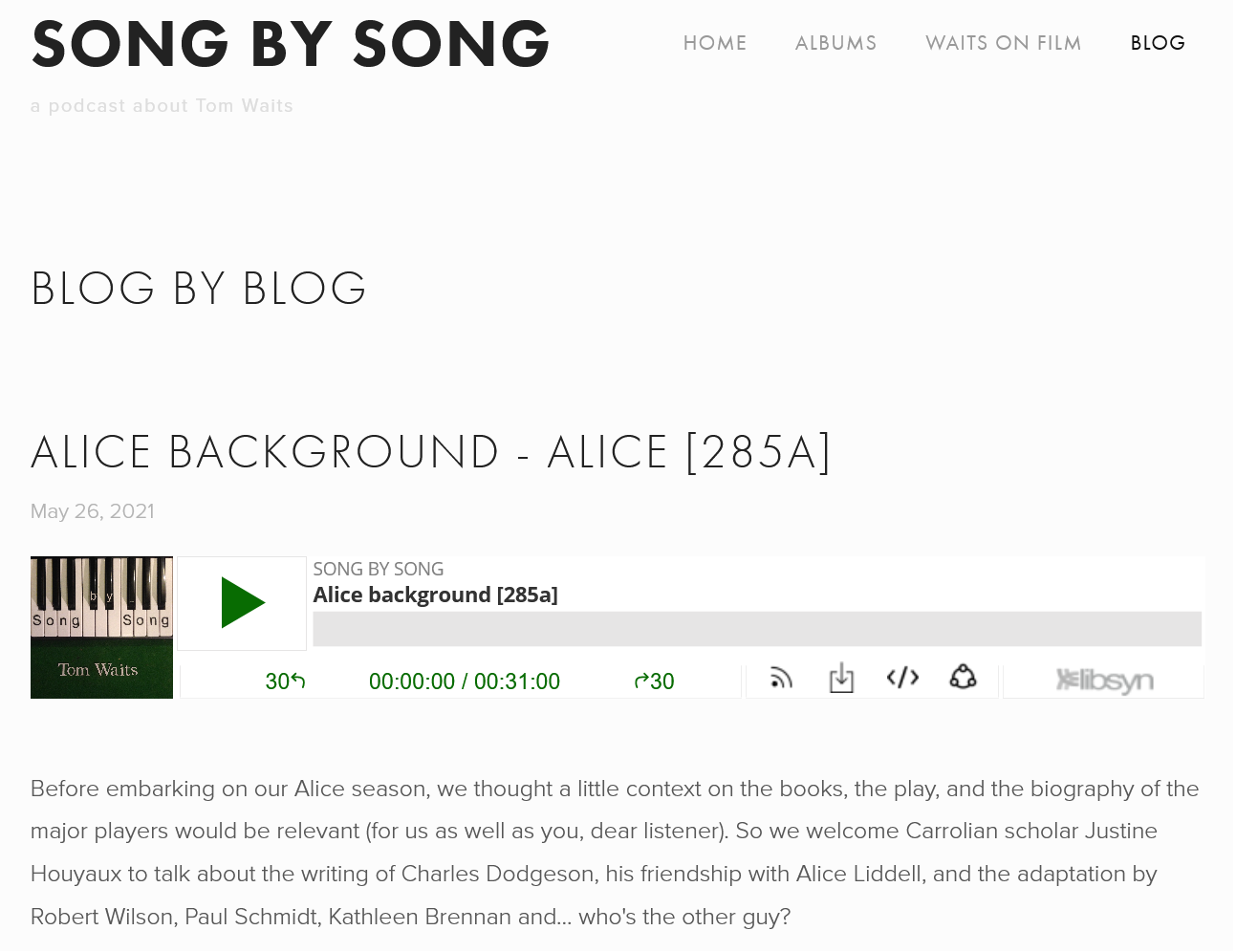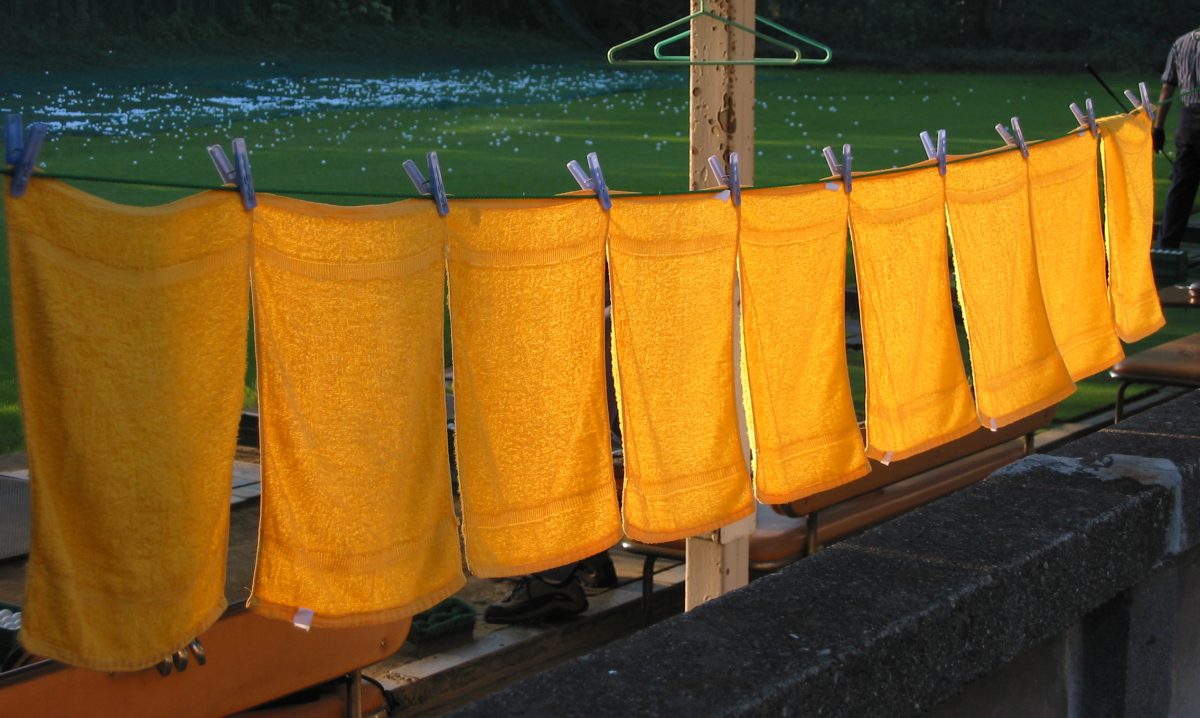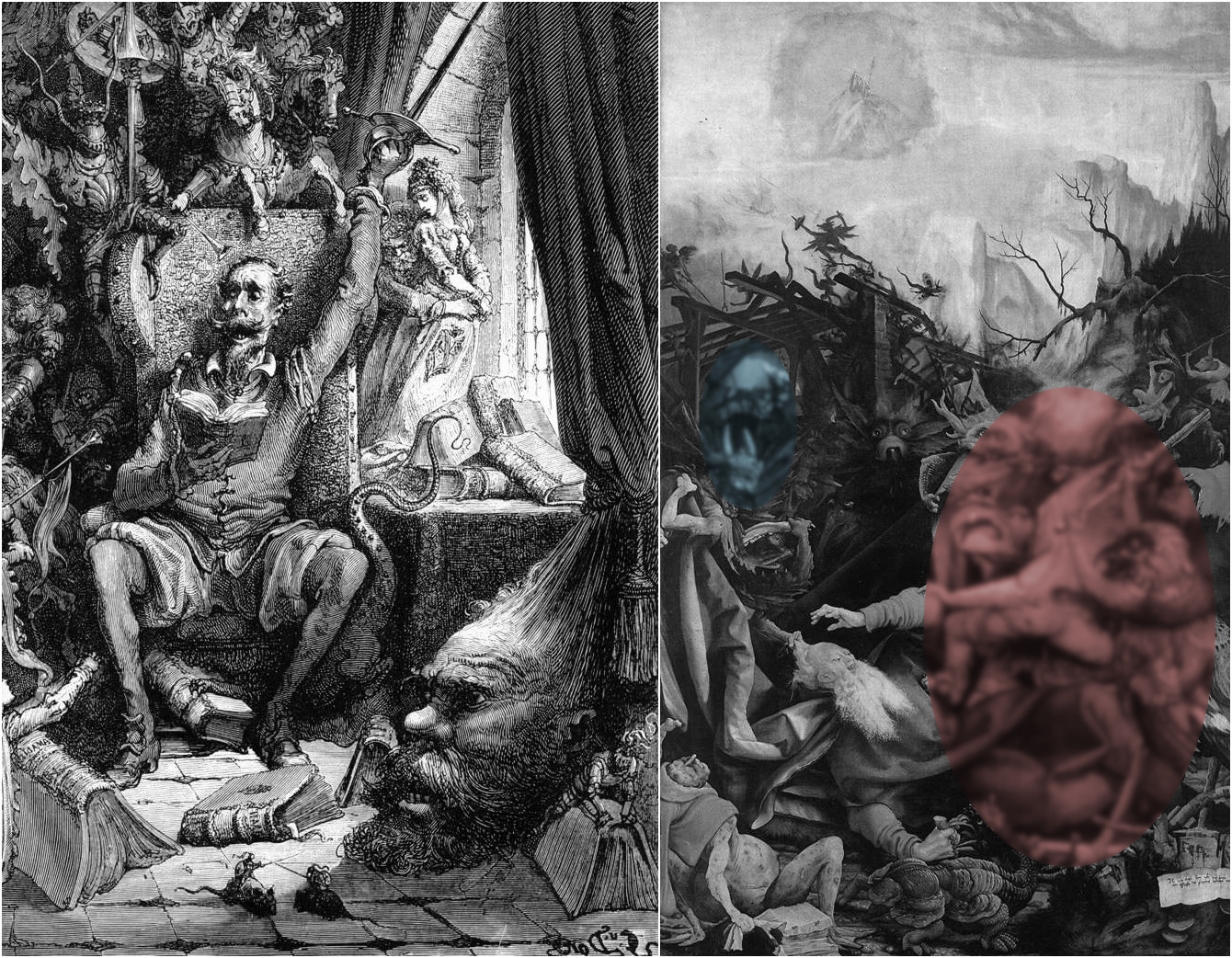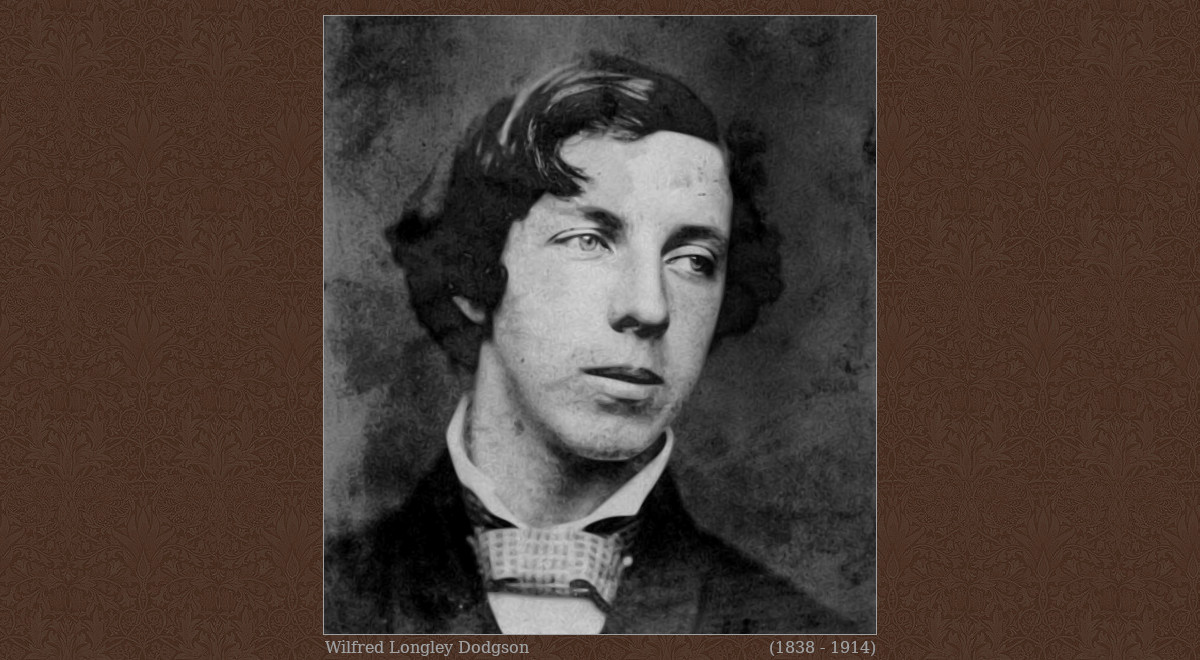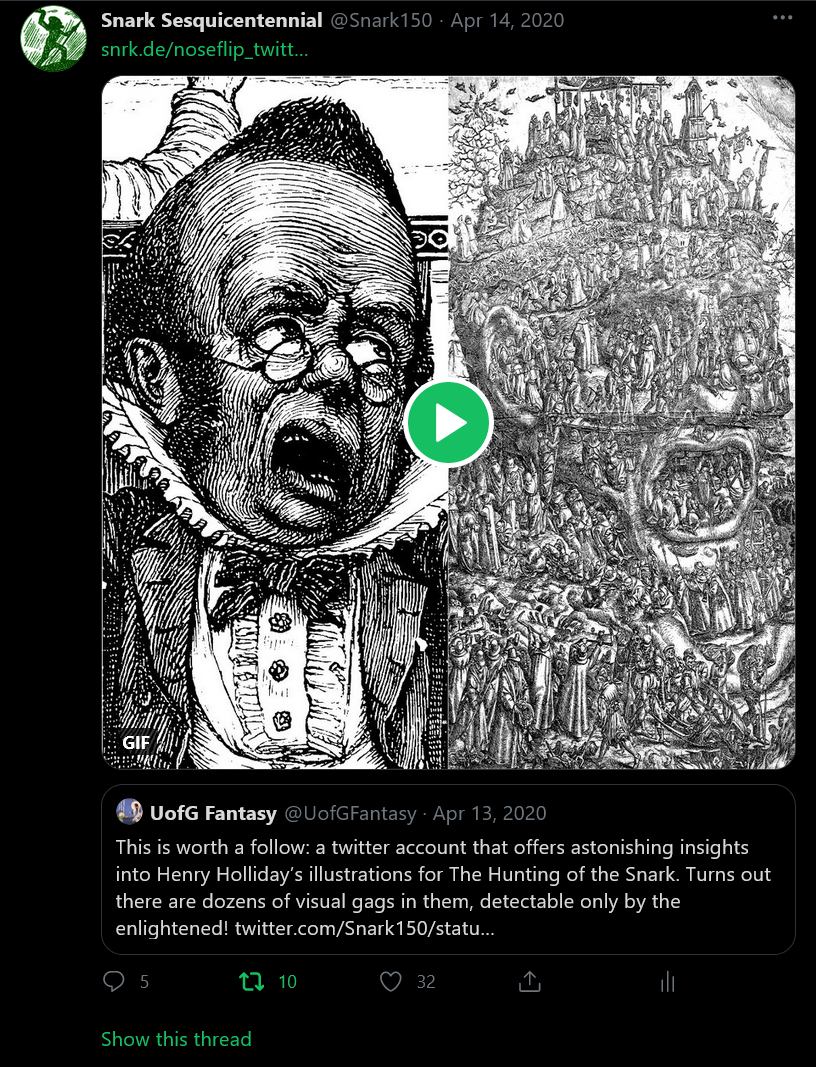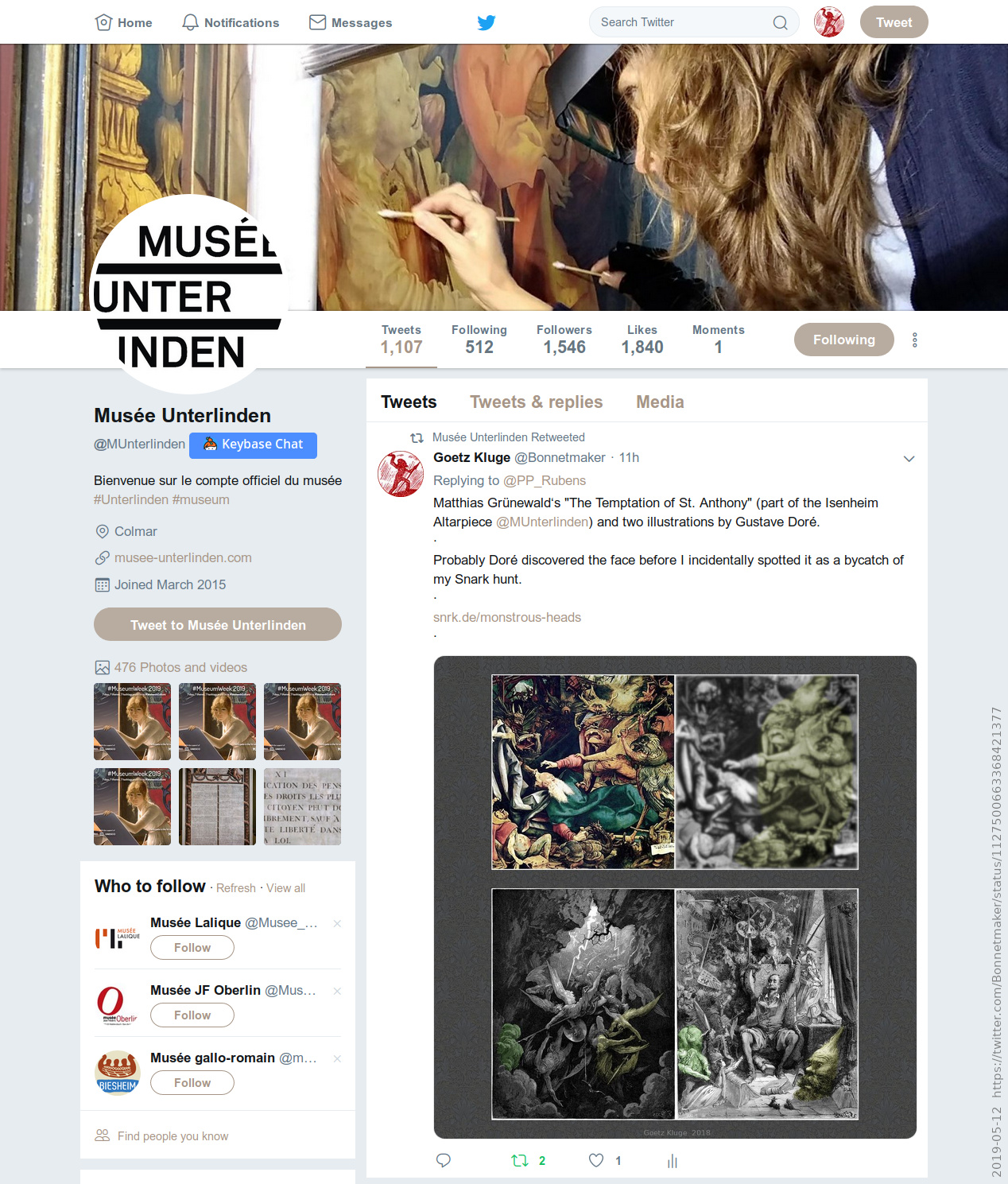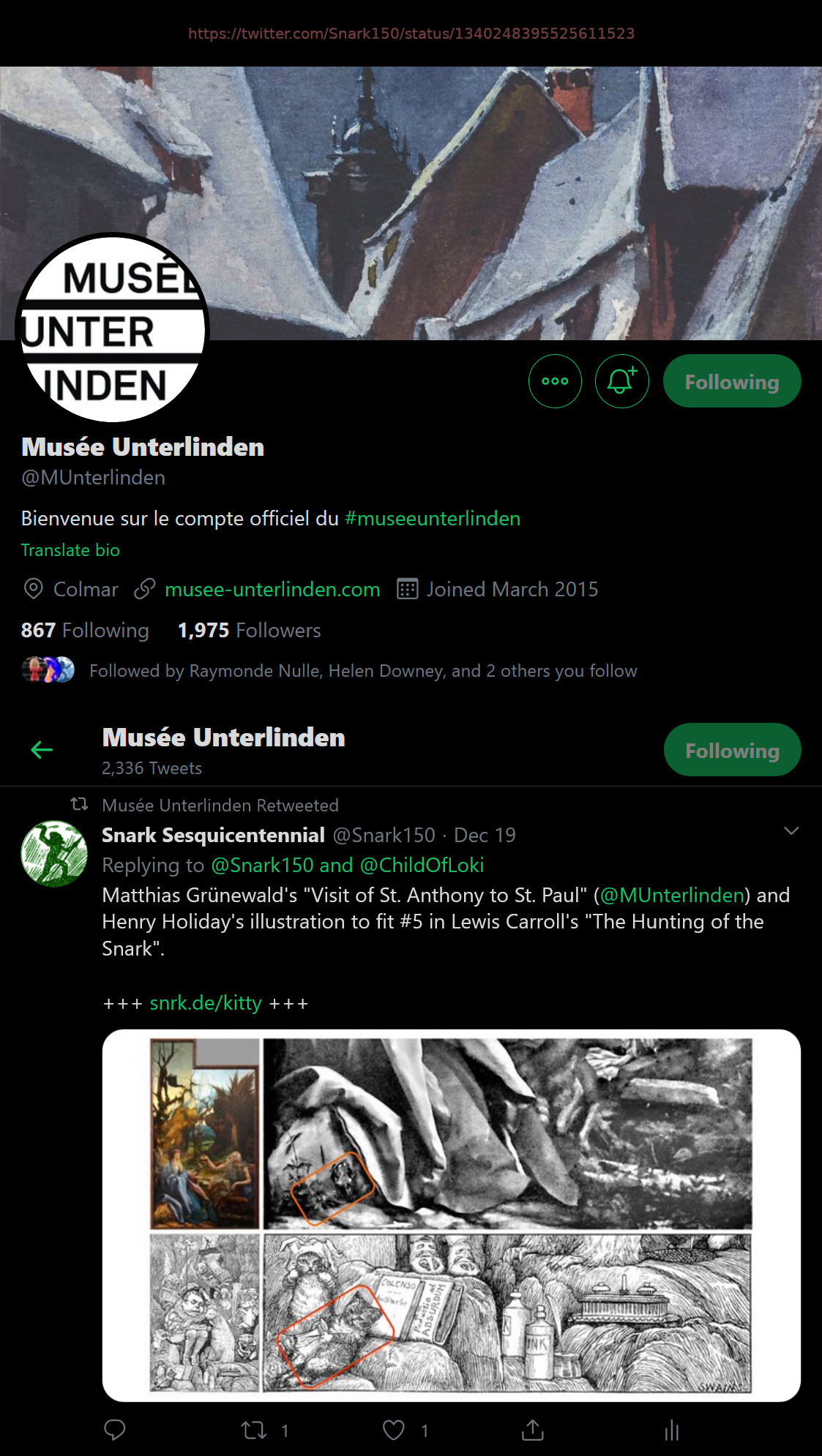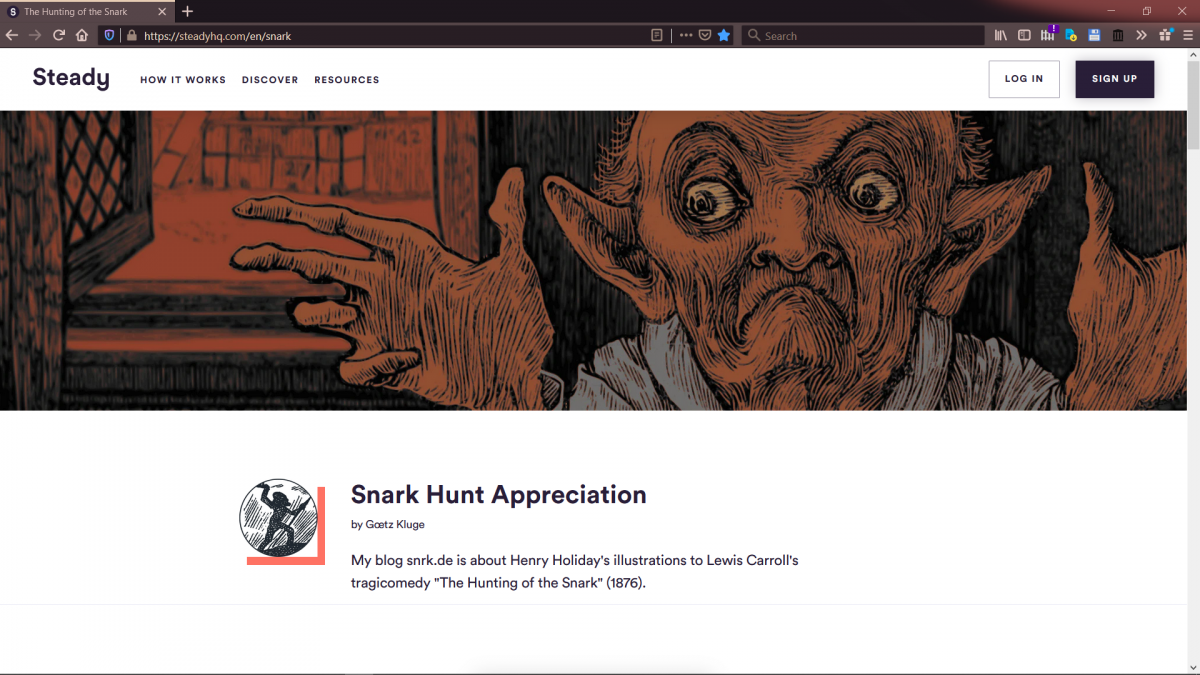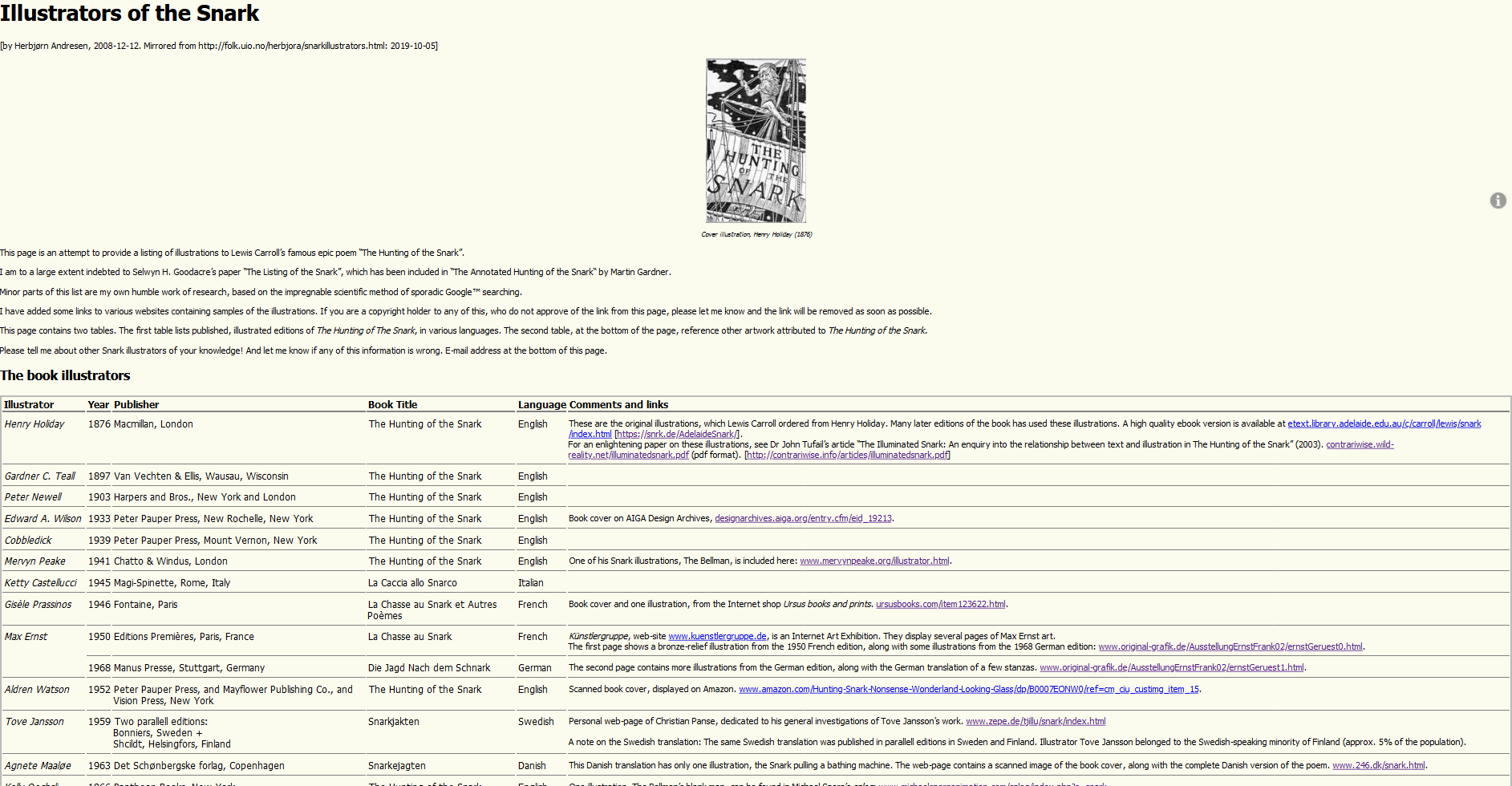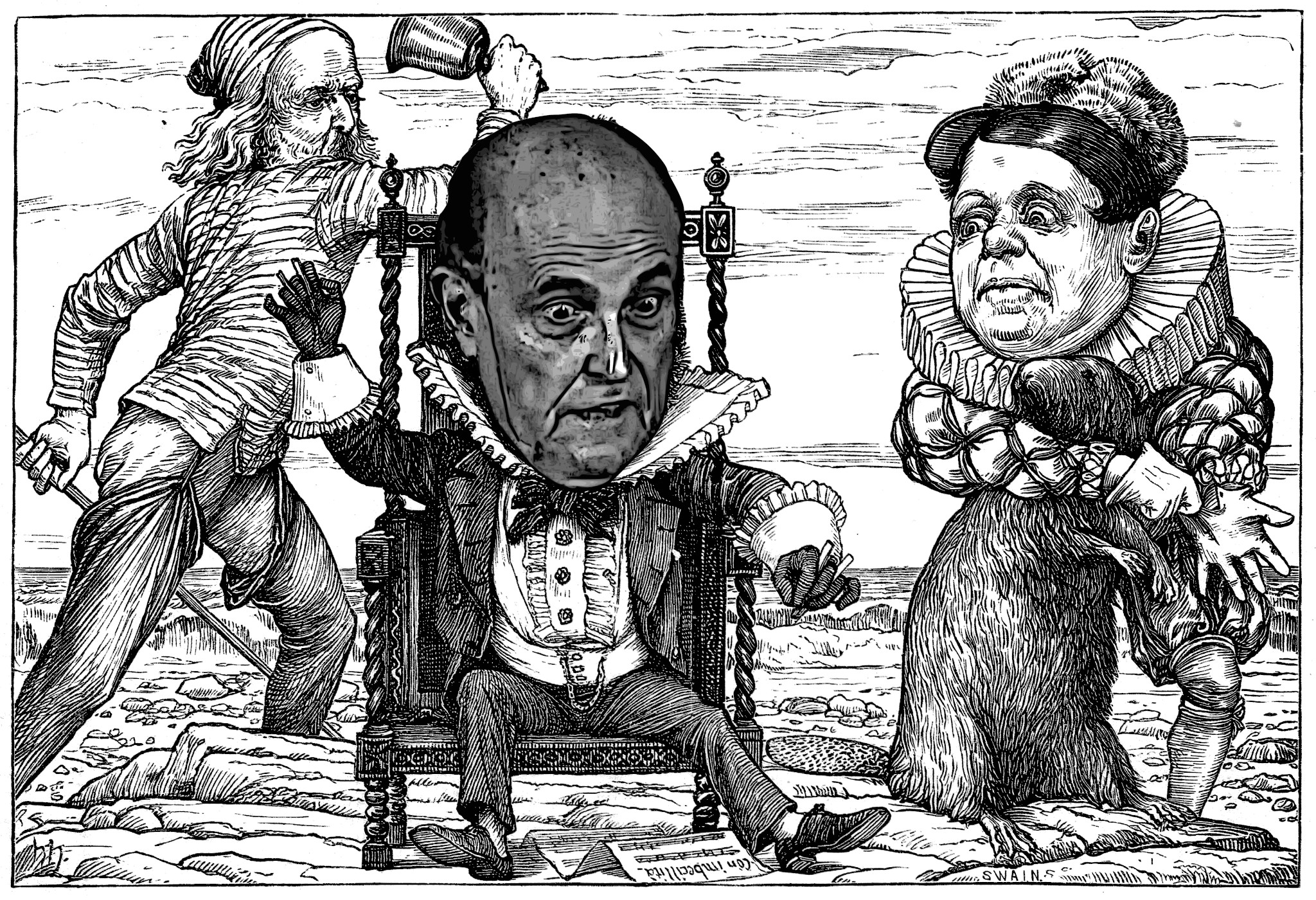This is not about The Hunting of the Snark and not only about Tom Waits.
A large part of the interview with Justine Houyaux is about Charles Dodgson (Lewis Carroll).
blog
May 25th: Towel Day!
Alice on the Train
Bycatch (but not mine):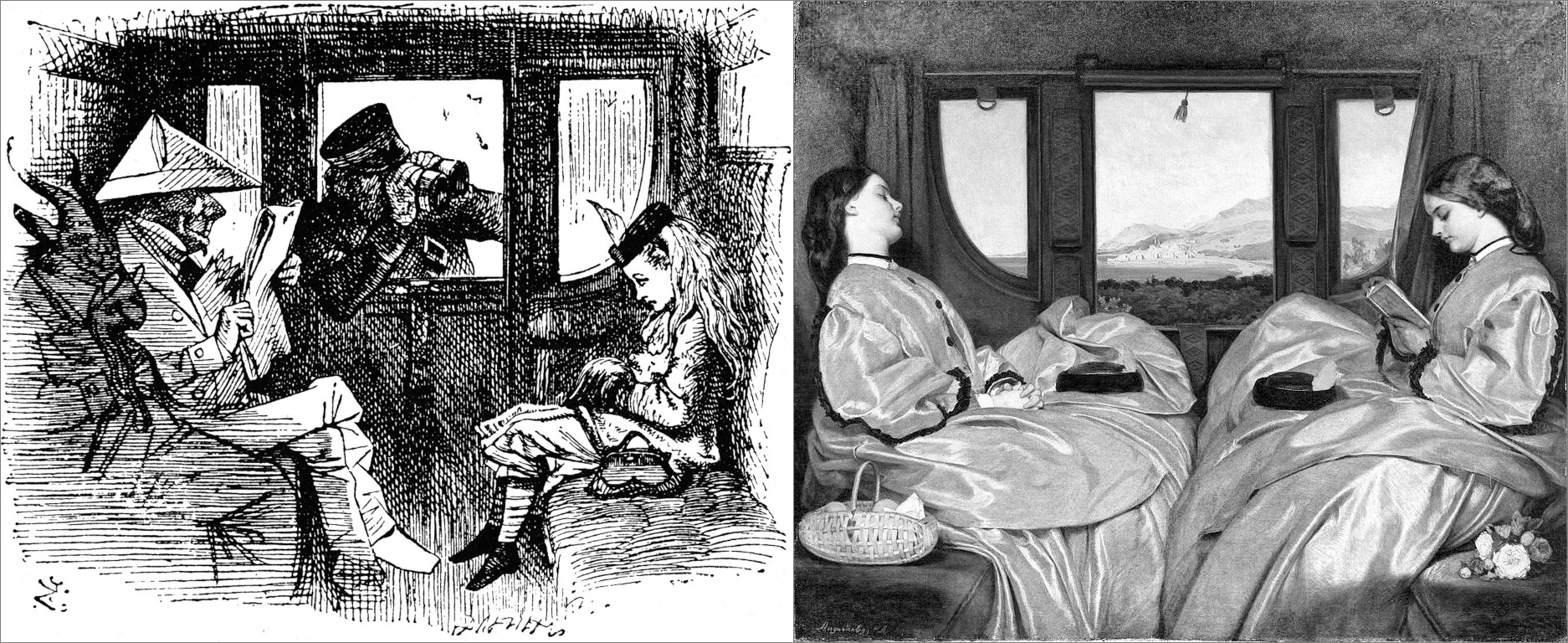
[left]: John Tenniel: Alice on the Train (1872)
[right]: Augustus Leopold Egg: The Travelling Companions (1862)
I found the comparison in preraphaelitesisterhood.com. If it is a pictorial reference at all, it might be a nice pun by Tenniel, but not as challenging as Henry Holiday’s conundrums.
Playing with the work of other artists could have been fun for John Tenniel too. (Of course another reason for such similarities always could be, that Holiday and Egg both referred an image by a third artist.)
2017-09-22, updated: 2021-05-24
Big Head in a Mess
Alice in the Woods
Bycatch from my Snark hunt:
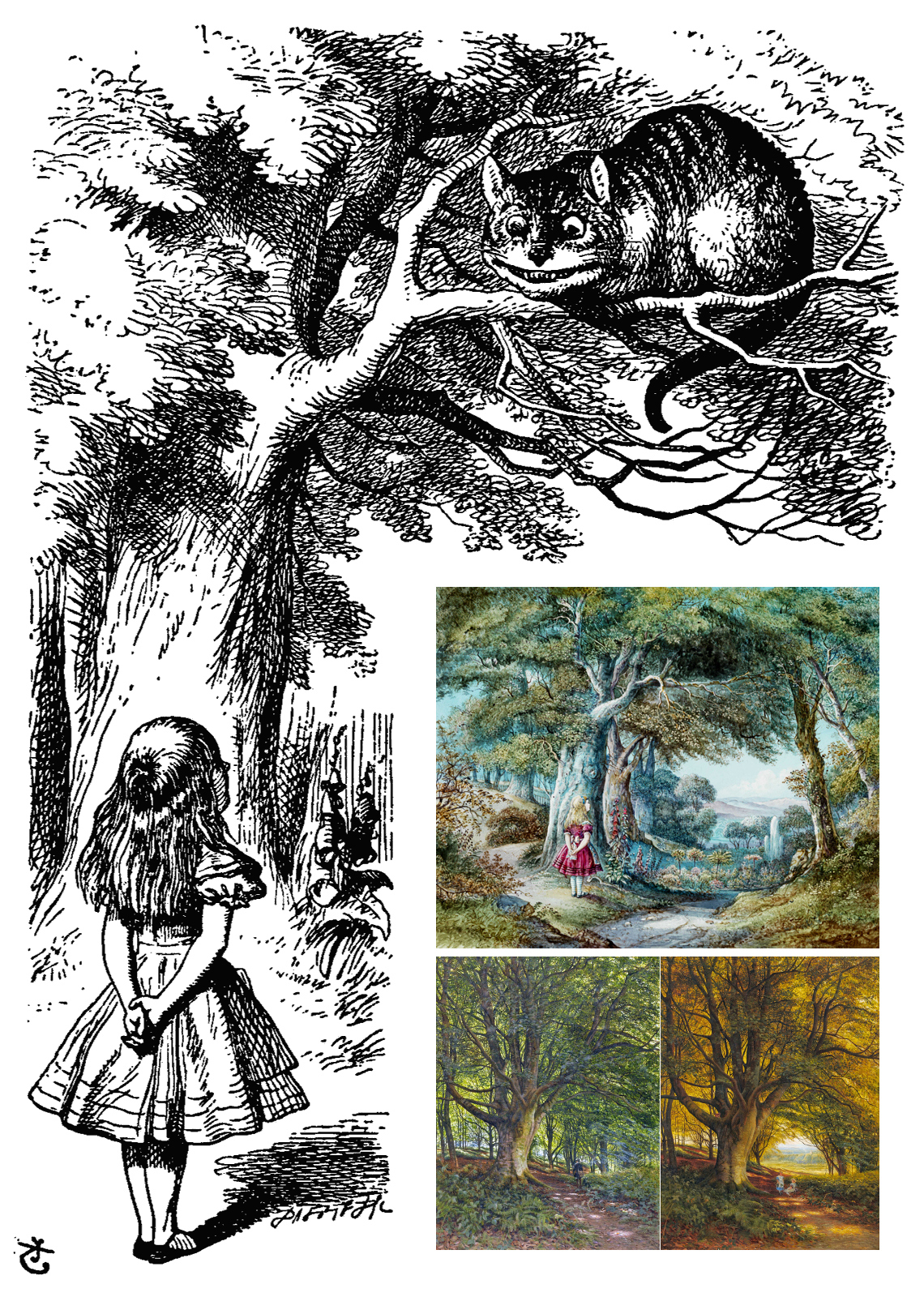
- [background]: Sir John Tenniel: Alice & Cheshire Cat (1866 or 1869?)
vintageephemera.blogspot.de/2010/08/book-illustration-cheshire-cat-alices.html - [center right]: Magic lantern slide by William Robert Hill: Alice in Wonderland (1876)
twitter.com/Bonnetmaker/status/525660964700848129 - [bottom center]: Bonomi Edward Warren: Sportsman and dog on a wooded path (1868, watercolor)
- [bottom right]: Bonomi Edward Warren: Woodland Scene in Summer with Children on a Path (1871, oil on canvas)
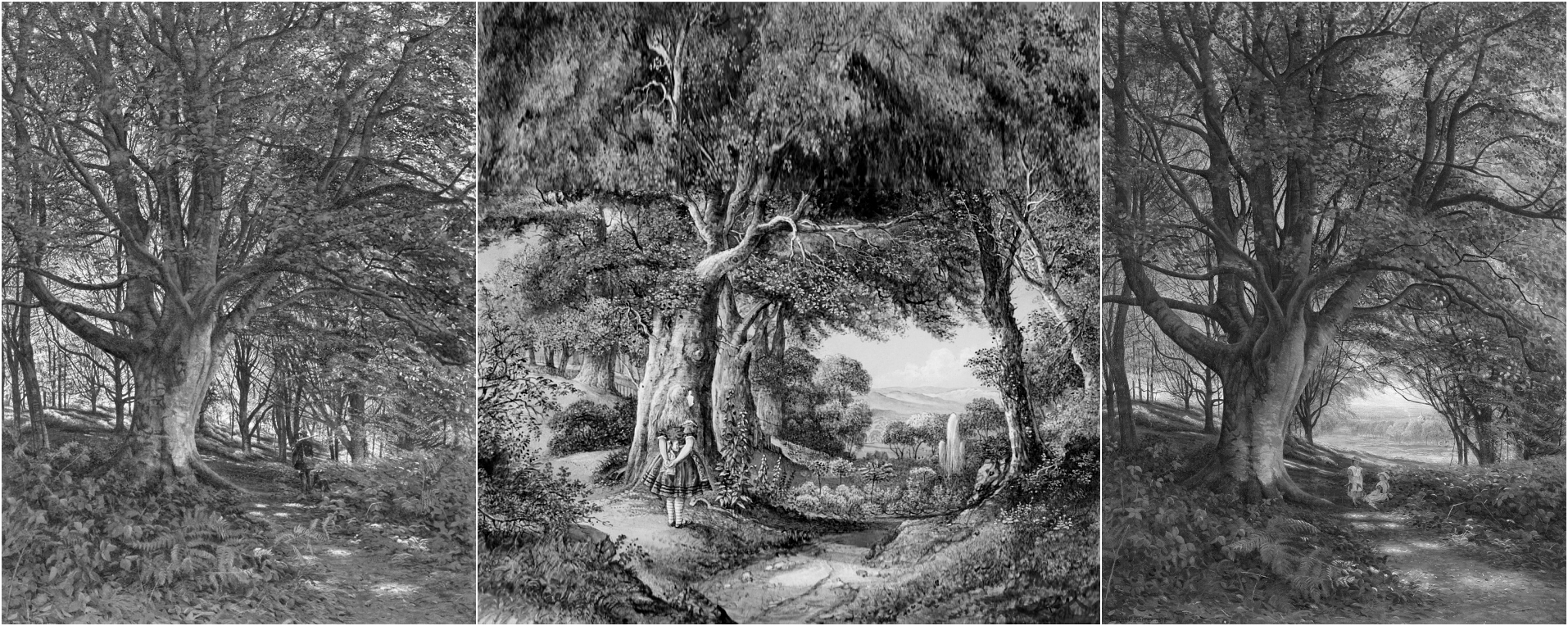
2018-03-31, updated: 2021-03-31
Before snrk.de
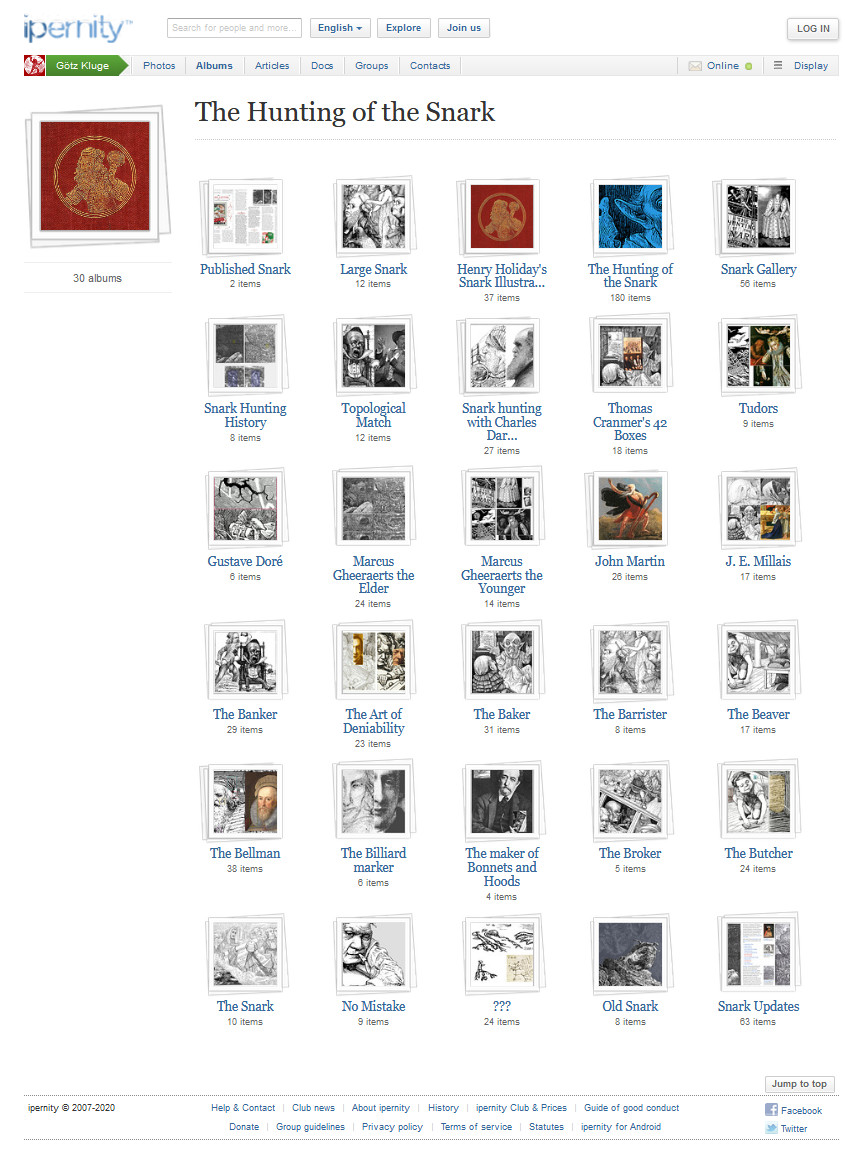 My Snark hunt started in 2009 using Flickr for presenting what I found. When Flickr messed up their layout in 2013, I moved to Ipernity, which started as a Flickr clone. (My early Snark hunting history also is described in Ipernity.) Later I also used Academia.edu and Reddit.
My Snark hunt started in 2009 using Flickr for presenting what I found. When Flickr messed up their layout in 2013, I moved to Ipernity, which started as a Flickr clone. (My early Snark hunting history also is described in Ipernity.) Later I also used Academia.edu and Reddit.
In Autumn 2017, I started my snrk.de blog, which now is accompanied by a Facebook page, a Facebook group and a Twitter account.
2020-12-17, update: 2021-03-21
Henry Holiday
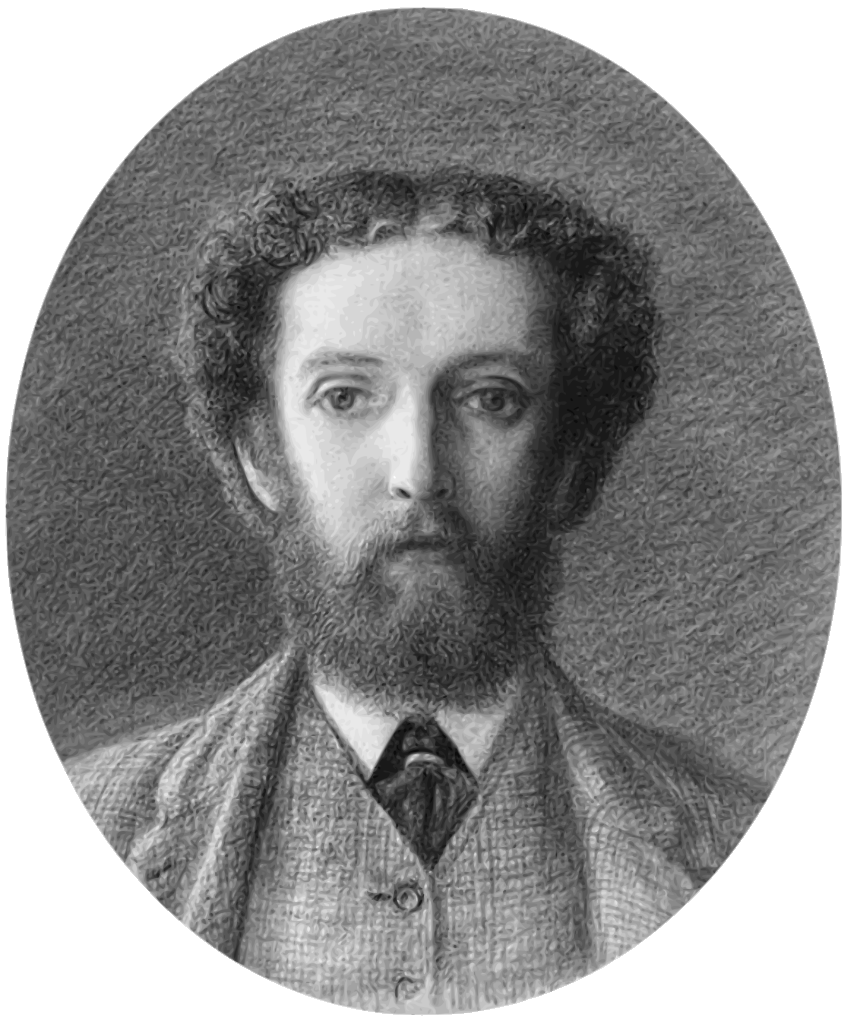
- National Portrait Gallery: NPG x18530, portrait photo of Henry Holiday, 1870s
- National Portrait Gallery: NPG x22251, portrait photo of Henry Holiday’s father, 1870s
- Henry Holiday: «L.C. forgot that “the Snark” is a tragedy», 1876
- Henry Holiday: Reminiscences of my Life, c. 1914
- Henry Holiday: The Snark’s Significance, 1898
- Wikipedia: Henry Holiday
- Category Henry Holiday in snrk.de
2018-05-24, update: 2021-03-15
Brian Dewan’s Snark
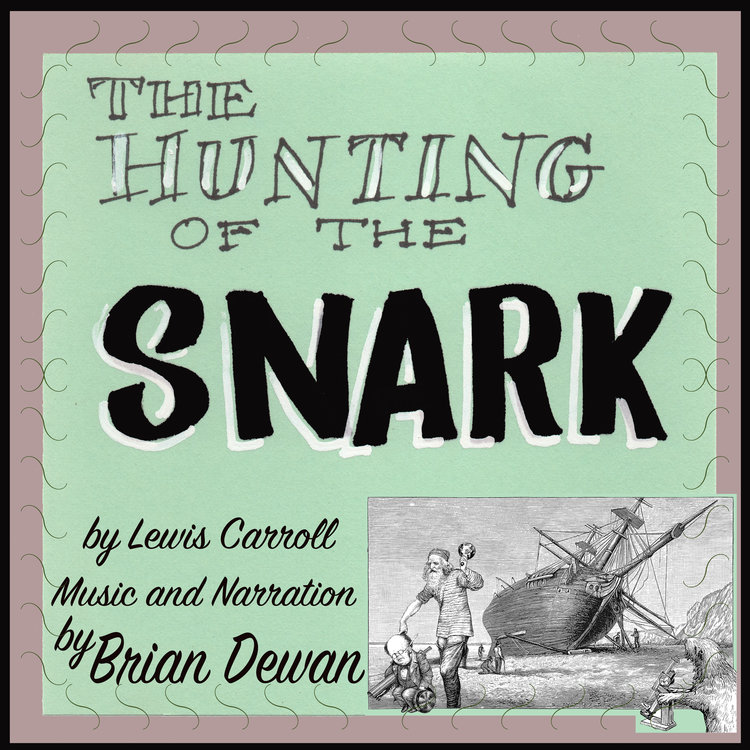 Today (2021-03-14) I learned about Brian Dewan, because he used my assemblage on the cover of his The Hunting of the Snark. His recording (2017) was aired in London and New York. The borrowing is fine with me, because for the assemblage I too borrowed illustrations. They were made by two 19th century artists.
Today (2021-03-14) I learned about Brian Dewan, because he used my assemblage on the cover of his The Hunting of the Snark. His recording (2017) was aired in London and New York. The borrowing is fine with me, because for the assemblage I too borrowed illustrations. They were made by two 19th century artists.
Monstrous Things from Walls
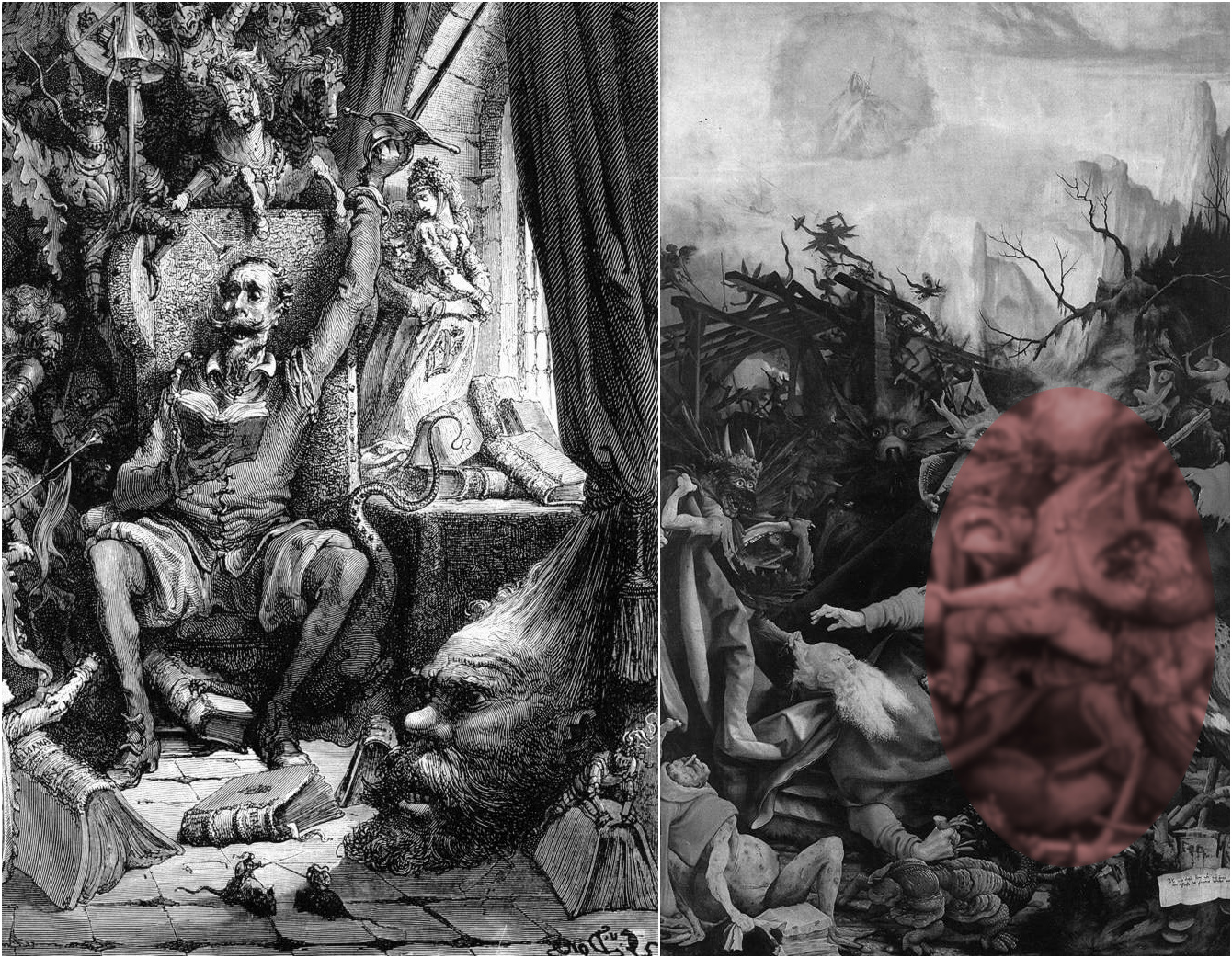 The monsters already were there. But what did Gustave Doré see in the sky in Matthias Grünewald’s painting?
The monsters already were there. But what did Gustave Doré see in the sky in Matthias Grünewald’s painting?
Look at walls splashed with a number of stains, or stones of various mixed colours. If you have to invent some scene, you can see there resemblances to a number of landscapes, adorned with mountains, rivers, rocks, trees, great plains, valleys and hills, in various ways. Also you can see various battles, and lively postures of strange figures, expressions on faces, costumes and an infinite number of things, which you can reduce to good integrated form. This happens on such walls and varicoloured stones, (which act) like the sound of bells, in whose peeling you can find every name and word that you can imagine.
Do not despise my opinion, when I remind you that it should not be hard for you to stop sometimes and look into the stains of walls, or the ashes of a fire, or clouds, or mud or like places, in which, if you consider them well, you may find really marvelous ideas. The mind of the painter is stimulated to new discoveries, the composition of battles of animals and men, various compositions of landscapes and monstrous things, such as devils and similar things, which may bring you honor, because by indistinct things the mind is stimulated to new inventions.
Reprinted from the Oxford edition of Selections from the Notebooks of Leonardo da Vinci, edited by Irma A. Richter. The selections are from da Vinci’s A Treatise on Painting (Trattato della pittura).
(Thanks to Jono Borden for asking.)
2017-12-29, updated: 2022-03-10
Holiday’s Butcher and Millais’ Raleigh
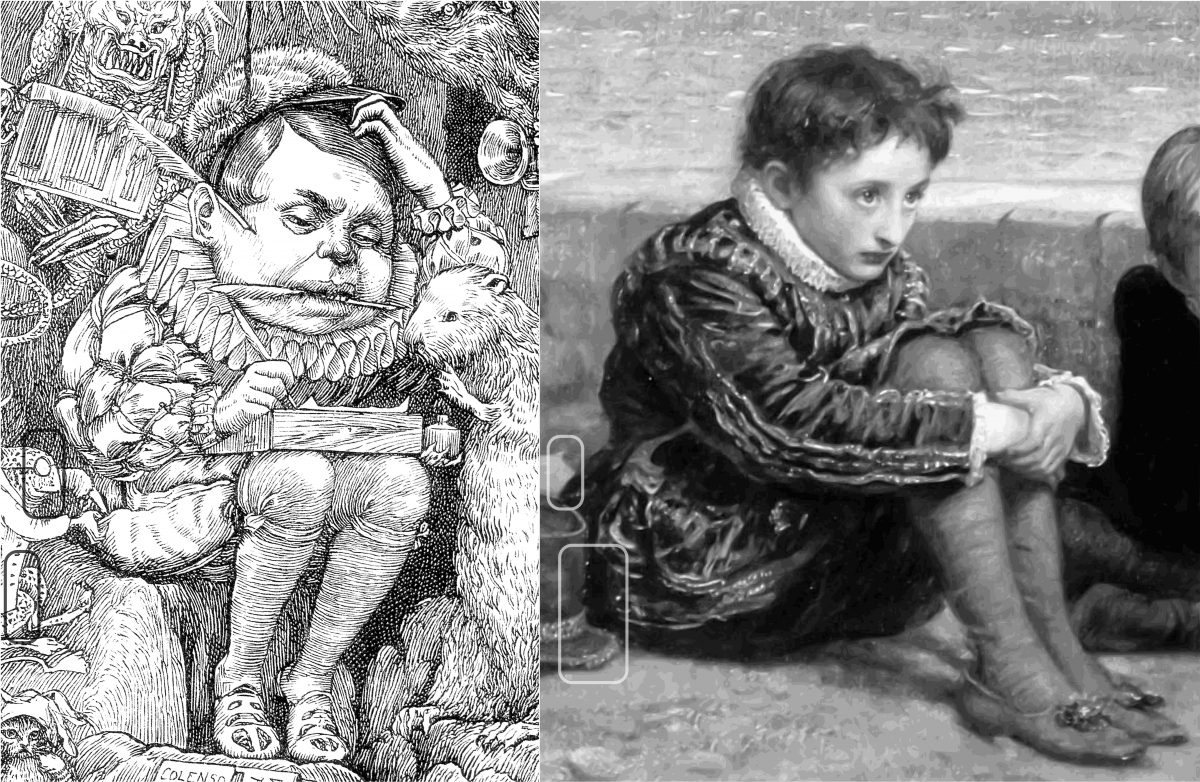
But perhaps Holiday’s ruff – and the pose of the Fit Five drawing – was inspired by the Elizabethan drama inherent in Millais’ Boyhood of Raleigh, (1869).
Louise Schweitzer, One Wild Flower (2012)
If you want to be on the safe side, just claim that the meaning of the Snark is elusive. But to the more courageous readers I recommend Louise Schweitzer’s doctoral thesis One Wild Flower.
2017-09-04, update: 2021-03-05
Fact Checks
- Ambiguous: The “Boots” and “the maker of Bonnets and Hoods” in The Hunting of the Snark might be two different persons, but also could be the same person.
- Unproven: The assumption that Carroll was on drugs when he wrote the Alice books.
- Sometimes wrong: Carroll quotes. Check them.
- Not quite right: The assumption that C.L. Dodgson (aka Lewis Carroll) invented the word “Snark”.
- Wrong: The assumption that the “Ocean Chart” (the Bellman’s map) in The Hunting of the Snark was made by Henry Holiday.
- Wrong: The claim by rare book sellers that only the first issue of The Hunting of the Snark has “Baker” on page 83.
- Wrong: The assumption that there is photographic evidence that Alice Liddell, as a child, kissed C.L. Dodgson.
- Wrong: The story that C.L. Dodgson sent an admiring Queen Victoria a copy of An Elementary Treatise on Determinants.
2019-07-12, updated: 2021-02-24
“Thought to be based on Gheeraert’s iconoclasm image”
Message to the Public Domain Review (2019-10-10): You are using my comparison (from December 2008) without proper referencing. This was my first discovery of one of Henry Holiday’s allusions. This finding started my Snark hunt. I think that Public Domain Review should specify the source (my proposal).
(February 2021: Now there is a link “thought by some” in publicdomainreview.org/collection/the-art-of-hidden-faces-anthropomorphic-landscapes)
Image (2019-10-10) from 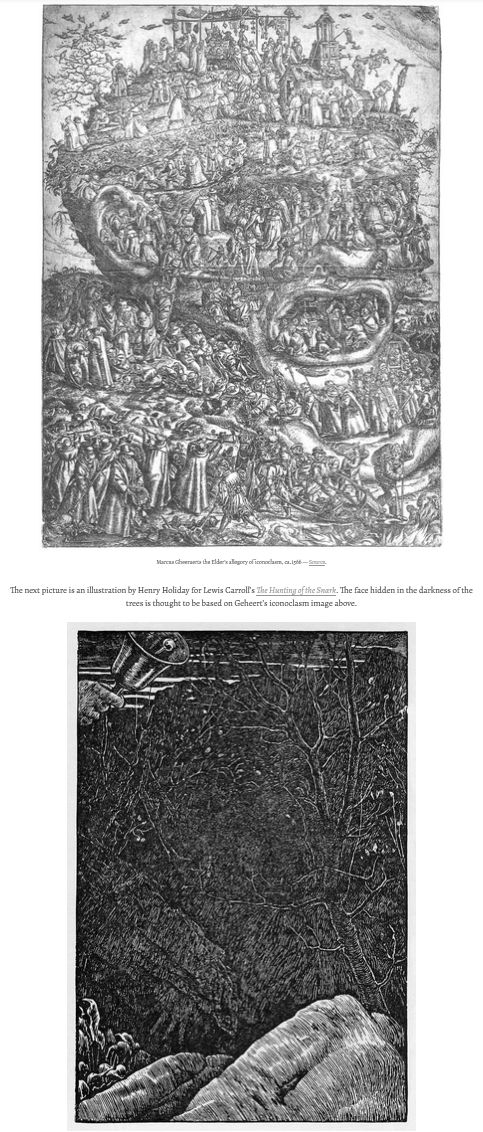 https://publicdomainreview.org/collection/the-art-of-hidden-faces-anthropomorphic-landscapes#17-0:
https://publicdomainreview.org/collection/the-art-of-hidden-faces-anthropomorphic-landscapes#17-0:
Marcus Gheeraerts the Elder’s allegory of iconoclasm, ca.1566 — Source.
The next picture is an illustration by Henry Holiday for Lewis Carroll’s The Hunting of the Snark. The face hidden in the darkness of the trees is thought to be based on Geheert’s iconoclasm image above.
The tenth of Henry Holiday’s original illustrations to Lewis Carroll’s The Hunting of the Snark, 1876 — Source.
By the way, it’s not “the 10th” of Henry Holiday’s original illustrations to Lewis Carroll’s The Hunting of the Snark. Holiday contributed only nine (not ten) illustrations to The Hunting of the Snark and two illustrations for the book cover. The Ocean Chart probably had been made by a typesetter, not by Henry Holiday.
And there are various way’s to write Gheeraert’s name. 😉
For discussion: Twitter | Flickr 2009
2019-10-10, updated: 2021-02-18
This is worth a follow
UofG Fantasy @UofGFantasy, Apr 13, 2020
This is worth a follow: a twitter account that offers astonishing insights into Henry Holliday’s illustrations for The Hunting of the Snark. Turns out there are dozens of visual gags in them, detectable only by the enlightened!
My bragging is not perfect. I accidentally deleted the Tweet which earned me the recommendation by the Centre for Fantasy and the Fantastic (University of Glasgow). But luckily the Internet doesn’t forget.
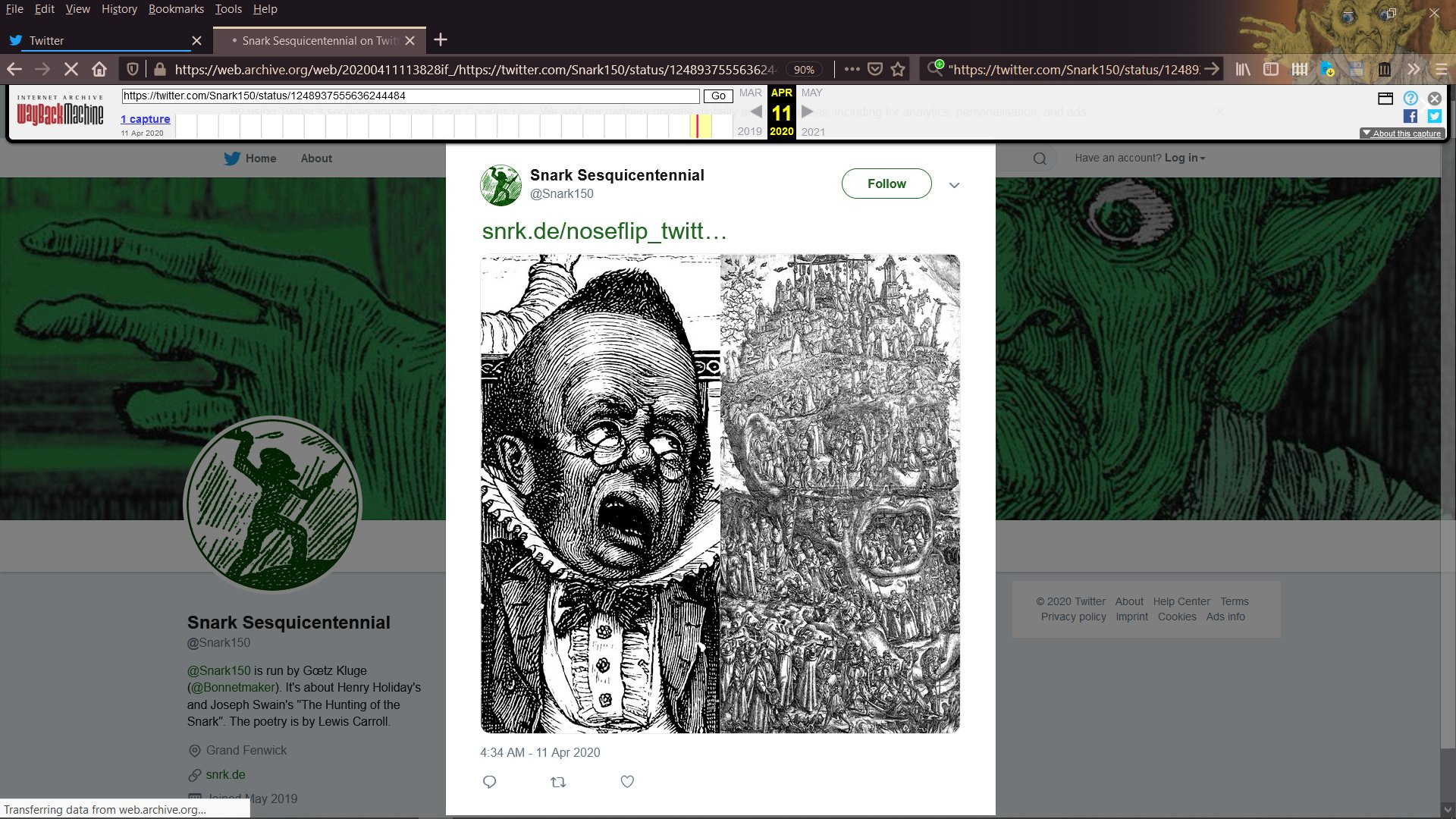 (Firefox theme: Dark Snark)
(Firefox theme: Dark Snark)
2021-02-14
Snark AV in the Internet Archive
audio video items as of 2020-01-29
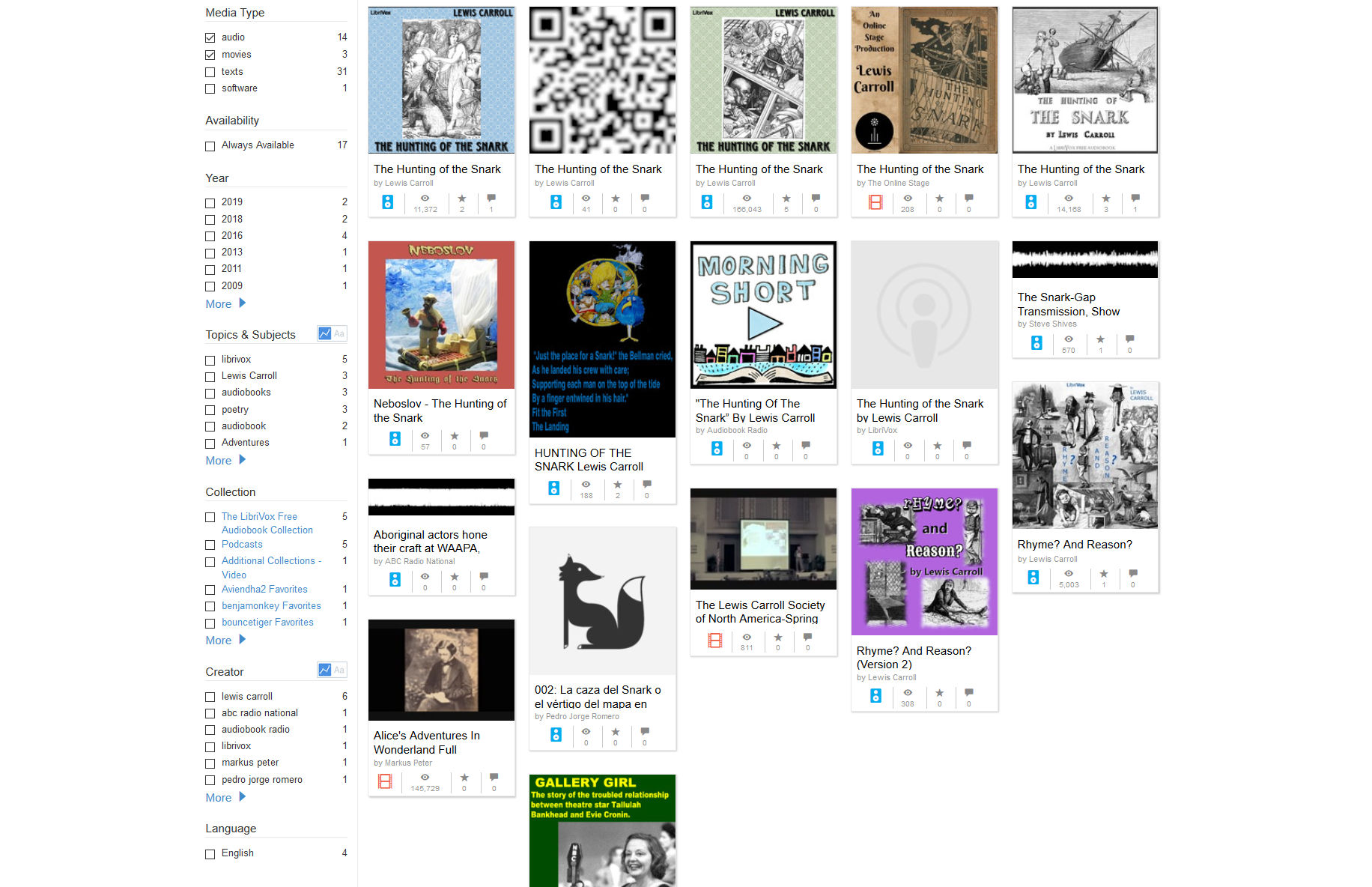
The CD cover in the top right corner is my design. You can use this Snark assemblage in compliance with license CC BY-NC-ND 4.0. Main artists: Conrad Martens & Thomas Landseer, Henry Holiday & Joseph Swain.
new search | Snark readings by LibriVox | Snark assemblage used by Librivox
2020-01-29, updated: 2021-01-31
The Face at Musée Unterlinden
2020-12-19: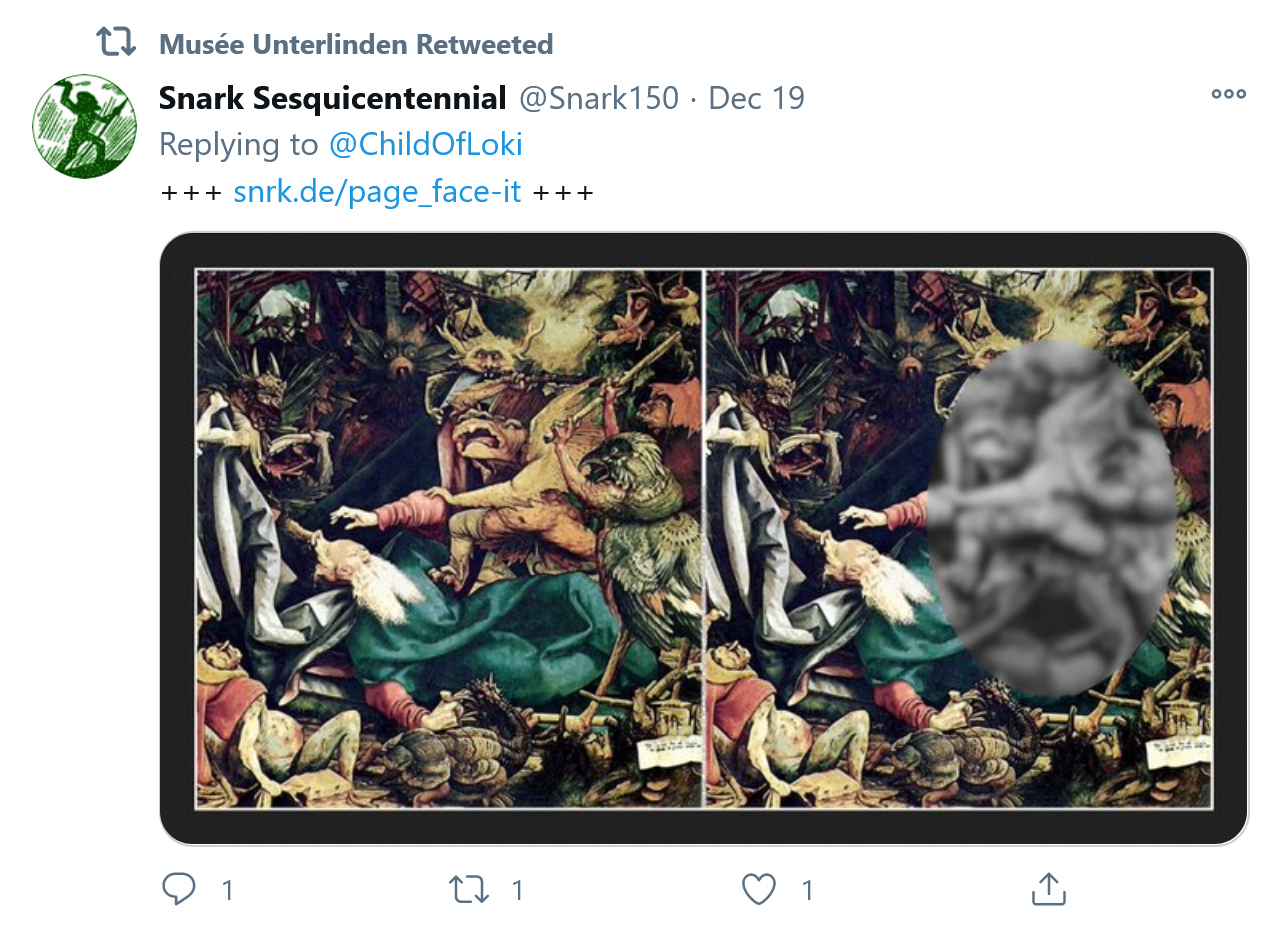
Monstrous Heads | Face it! | Tweets
Happy Holidays!
Snark Hunt Appreciation
Lists of Snark illustrators
Herbjørn Andresen allowed me to mirror his list of illustrators of Lewis Carroll’s “The Hunting of the Snark”. It had been published in 2008. Therefore many URLs are not valid anymore. Herbjørn’s page has been removed from the server of the Oslo university in 2020 (and cannot be found in archive.org).
More lists:
※ Steve and Geoff
※ Lewis Carroll Resources
※ Lewis Carroll Society (UK): Carroll’s illustrators.
Drugs
Lewis Carroll needed a clear mind for whatever he wrote. Drugs like laudanum would not have been helpful during writing.
The drug link is a homespun thing. You’ll find it on a host of random forums.
But the experts are usually sceptical. Carroll wasn’t thought to have been a recreational user of opium or laudanum, and the references may say more about the people making them than the author.
“The notion that the surreal aspects of the text are the consequence of drug-fuelled dreams resonates with a culture, particularly perhaps in the 60s, 70s and 80s when LSD was widely-circulated and even now where recreational drugs are commonplace,” says Dr Heather Worthington, Children’s Literature lecturer at Cardiff University.
Source: Is Alice in Wonderland really about drugs?
(by Sophie Robehmed, BBC magazine 2012-08-20)
Let me be perfectly clear here: Lewis Carroll didn’t do recreational drugs. Certainly there were drug references in Alice’s Adventures in Wonderland and these were picked up on by people with interests in that area, particularly in the late sixties. That is not to say that Carroll never took Laudanum for a medical problem on the advice of a doctor. There is NO direct proof (in his letters or his diaries) that he ever took narcotic drugs. You might ask yourself why students insist that he did and why some teachers teach that he did.
- Alice gets linked to the drug culture. No, Lewis Carroll did not use mind altering drugs to increase his creativity. He used his imagination. If you have one, it’s better than drugs. If you don’t, the drugs won’t help you. With apologies to the late Timothy Leary.
- This can’t be true
- A couple of acid blotters
- Chemical Alice the band
- Using Alice to JUST SAY NO
Source: lewiscarroll.org (2002)
2019-12-12, update: 2020-11-29

